Audio-Visual Station
At Audio-Visual station on the first floor of the Kyoto University Museum, you can access to archival materials stored in KURRA, digital exhibitions based on them, and related video contents.
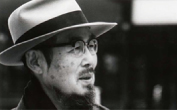
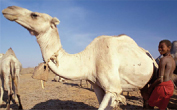

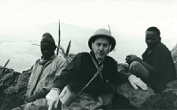
Video contents on view
- Categories are shown as below.
 Videos using archival materials
Videos using archival materials
 Videos from outside KURRA
Videos from outside KURRA
 Interviews explaining archival materials
Interviews explaining archival materials - “Duration” is the duration of the main part.
|
|
Mamoru Shibayama Talks about Archives: Area-Studies with Informatics Perspective
|
|
|
Video related “Kawai (Masao) Collection”: Talk between Masao Kawai and Terufumi Ohno
|
|
|
Video related “Kawai (Masao) Collection”: Talk between Masao Kawai and Juichi Yamagiwa
|
|
|
The Painting of the 15 Mysteries of the Madonna
|
|
|
Ever-Changing Universe: The Study of Universe at Kyoto University
|
|
|
THE MU Radar – Exploration of Middle & Upper Atmosphere
|
|
|
Save the Earth and Humanity: a Challenge of the Research Institute for Sustainable Humanosphere
|
|
|
Pluripotent Cells (digest version)
|
|
|
Kyoto University
|
|
|
YUKAWA HIDEKI, a Profile
|
|
|
Creative man, From Eastern thinking to theoretical physics: YUKAWA HIDEKI
|
|
|
Philosopher of Nothingness, a founder of a Japanese philosophy from ZEN Buddhism: NISHIDA KITARO
|
|
|
The Tomb of Sei’i Tai’shogun, SAKANOUENO TAMURAMARO
|
|
|
Triangular−Rimmed Deity and Beast Mirror
|
|
|
Breakthrough: Yoneo Ishii and the Study of Southeast Asia
|
|
|
Moving Continent
|
|
|
Evolving Study of African Cities
|
|
|
African Farming Societies: Agriculture in Miombos
|
|
|
Pastoral Societies in the Drylands of East Africa
|
|
|
Paleoanthropology in Africa
|
|
|
The Forest People of Central Africa
|
|
|
History of Primatology in Africa
|
|
|
Road to Africa
|
Details
Mamoru Shibayama Talks about Archives: Area-Studies with Informatics Perspective
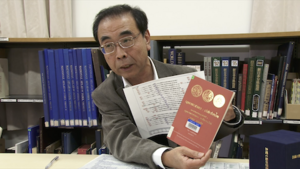
“I don’t really like simple ‘archives’.” Mamoru Shibayama (Professor Emeritus at Kyoto University, Informatics and Area Studies) expected KURRA to realize a system for organizing materials and making them usable in accordance with the demands of the times. He believed that it was not enough that materials were just collected, preserved, and provided, but that they should also be used in research activities.
In this video, Shibayama was interviewed and talked about his thoughts as one of the founders of KURRA and his experience with archives.
- Direction
Shunsuke Yamashita (The Kyoto University Museum), Tamaki Motoki (Academic Center for Computing and Media Studies, Kyoto University)
- Counsel
Haruyoshi Gotoh (The Kyoto University Museum)
- Camera
Masaji Iwakura (Academic Center for Computing and Media Studies, Kyoto University)
- Editing
Masaji Iwakura (Institute for Information Management and Communication, Kyoto University, as of 2023), Shunsuke Yamashita (Hokkaido University, as of 2023), Tamaki Motoki (Future University Hakodate, as of 2023)
- Year
2012 (Released in 2023)
- Duration
75min 34sec (total of six videos)
- Language
Japanese
Video related “Kawai (Masao) Collection”: Talk between Masao Kawai and Terufumi Ohno
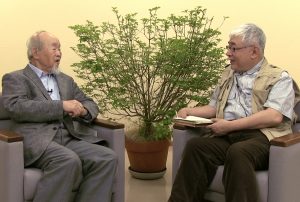
The important thing is not only just preserving materials, but also recording what he is like. ── These are video recordings of an interview with Masao Kawai, proposed by Juichi Yamagiwa (then dean of Graduate School of Science, Kyoto University) who started an archiving project of “Kawai (Masao) Collection: Films and Photographs on Primatology, 1959−1975.” In this part, Terufumi Ohno (then director of the Kyoto University Museum) interviewed Kawai and revealed him as a “museum-person.”
- Direction
Shunsuke Yamashita (The Kyoto University Museum)
- Counsel
Haruyoshi Gotoh (The Kyoto University Museum)
- Camera
Takashi Kimura (RemSketchRecords)
- Editing
Masaji Iwakura (Institute for Information Management and Communication, Kyoto University), Shunsuke Yamashita (The Hokkaido University Museum, as of 2018)
- Year
2013 (Released in 2019)
- Duration
93min 14sec (total of six videos)
- Language
Japanese
Video related “Kawai (Masao) Collection”: Talk between Masao Kawai and Juichi Yamagiwa
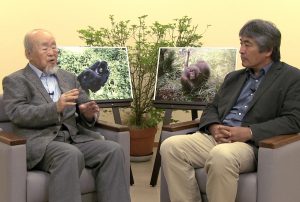
The important thing is not only just preserving materials, but also recording what he is like. ── These are video recordings of an interview with Masao Kawai, proposed by Juichi Yamagiwa (then dean of Graduate School of Science, Kyoto University) who started an archiving project of “Kawai (Masao) Collection: Films and Photographs on Primatology, 1959−1975.” In this part, Yamagiwa interviewed Kawai and looked back the activity of “Masao Kawai, a primatologist.”
- Direction
Shunsuke Yamashita (The Kyoto University Museum)
- Counsel
Haruyoshi Gotoh (The Kyoto University Museum)
- Camera
Takashi Kimura (RemSketchRecords)
- Editing
Masaji Iwakura (Institute for Information Management and Communication, Kyoto University), Shunsuke Yamashita (The Hokkaido University Museum, as of 2018)
- Year
2013 (Released in 2019)
- Duration
108min 34sec (total of eight videos)
- Language
Japanese
The Painting of the 15 Mysteries of the Madonna
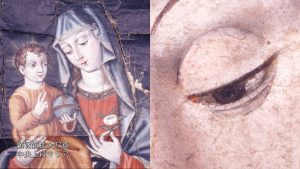
In 1931, the Painting of the 15 Mysteries of the Madonna was found at a village in the mountains at Ibaraki, Osaka. This beautiful painting, which was found at a loft of a private house, is a masterpiece that reflects the feelings of people in the Edo period, who didn’t abandon their religious beliefs in spite of severe oppression. In the second half of 1990s, researchers impressed by existence of the painting performed overall investigation and recording with as much enthusiasm as people who protected the painting. In this video, you can approach what did motivate the researchers.
- Production
The Kyoto University Museum
- Direction
Naoko Iwasaki, Shunsuke Yamashita (The Kyoto University Museum)
- Camera and Editing
Takashi Kimura
- Supervision
Naoko Iwasaki
- Cast
Nobuyuki Kamba (Tokyo National Museum), Michihiro Kojima (National Museum of Japanese History), Naoko Iwasaki
- Cooperation
Haruyoshi Gotoh, Motoko Ikeda, Yuko Okuda, Takako Takai (The Kyoto University Museum); Research Resource Archive, Kyoto University
- Year
2013 (Released in 2017)
- Duration
23min 1sec
- Language
Japanese
Ever-Changing Universe: The Study of Universe at Kyoto University
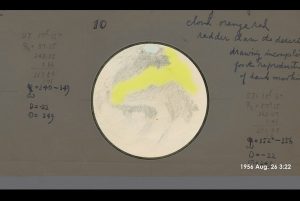
“On the evening of August 20th 1956, Shotaro Miyamoto’s eyes sparkled. On the southern hemisphere of Mars, glittering white cloud appeared. He was the director of Kwasan Observatory, Kyoto University, and observing Mars with 12-inch Cooke telescope.” This video shows the the history and the future of the study of universe at Kyoto University, describing “ever-changing universe,” by various scientific materials left at Astronomical Observatory and Department of Astronomy of Kyoto University.
- Planning
Terufumi Ohno (The Kyoto University Museum), Kazunari Shibata (Astronomical Observatory, Graduate School of Science, Kyoto University), Yoshio Tomita (Graduate School of Science, Kyoto University), Kyosuke Iwasaki (Kyoto Gakuen University)
- Planning and Editing
Shunsuke Yamashita (The Kyoto University Museum)
- Camera and Editing
Takao Minami, Yasunori Ikeda
- Sound effects
Tetsuya Okuno, Sampei (T-BORN)
- Narration
Narikinya Kiyotomi
- Cooperation and Information providing
Shiro Ebisawa; Yukiko Matsumoto; Hiroshi Fujiwara (Internet Research Institute, Inc.); Tomokazu Kogure; Noritaka Tokimasa (Nishi-Harima Astronomical Observatory); Hiroyuki Maehara, Tomomi Tomioka (Astronomical Observatory, Graduate School of Science, Kyoto University); Nano-Optonics Institute; NAGASE INTEGREX Co.,Ltd.; Nano-Optonics Energy Inc.; Nishi-Harima Astronomical Observatory; Astronomical Observatory, Graduate School of Science, Kyoto University; Graduate School of Science, Kyoto University
- Year
2012
- Duration
14min 28sec
- Language
Japanese
THE MU Radar – Exploration of Middle & Upper Atmosphere
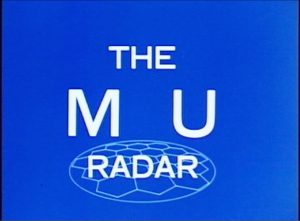
This is a promotion video of the MU radar (a large atmosphere observation radar).
- Planning and Production
Radio Atmospheric Science Center, Kyoto University; Mitsubishi Electric Co.,Ltd
- Video Production
DENEI Inc.
- Supervisor
SUSUMU KATO (Radio Atmospheric Science Center, Kyoto University)
- Year
1984 (Released in 2010)
- Duration
24min 39sec
- Language
Japanese and English
Save the Earth and Humanity: a Challenge of the Research Institute for Sustainable Humanosphere
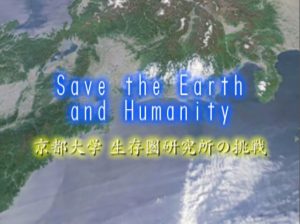
This is a promotion video of the Research Institute for Sustainable Humanosphere.
- Creator
Research Institute for Sustainable Humanosphere, Kyoto University; Japan Science and Technology Agency
- Production
KBS KYOTO PROJECT Co.,Ltd.
- Year
2008 (Released in 2010)
- Duration
29min 9sec
- Language
Japanese
Pluripotent Cells (digest version)
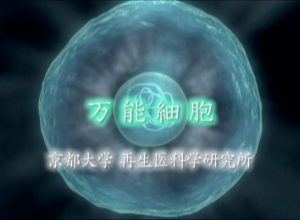
This is an introductory video of “pluripotent cells” by Institute for Frontier Medical Sciences, Kyoto University.
- Creator
Institute for Frontier Medical Sciences, Kyoto University
- Year
2008 (Released in 2010)
- Duration
17min 5sec
- Language
Japanese
Kyoto University
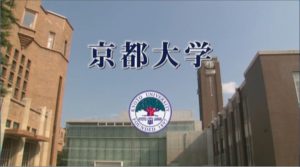
This is a promotion video of Kyoto University.
- Creator
Public Relations Center, Kyoto University
- Cooperation
EIZO-KIKAKU (Eizokikaku co. ltd.)
- Year
2008 (Released in 2010)
- Duration
15min 14sec
- Language
Japanese and English
YUKAWA HIDEKI, a Profile
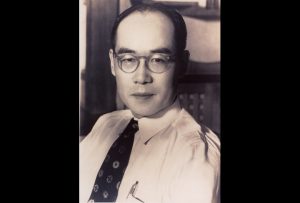
Dr. Yukawa, who was the first Nobel Prize winner in Japan, performed great services in nuclear and particle physics, starting with the meson theory in 1949.
- Production
Executive committee of the special exhibition conmmemorative of the centenary of Yukawa’s and Tomonaga’s birth
- Coproduction
Sanyo Eiga [Sanyo Film Co.Ltd.]
- Year
2006 (Released in 2008)
- Duration
9min 30sec
- Language
Japanese
Creative man, From Eastern thinking to theoretical physics: YUKAWA HIDEKI
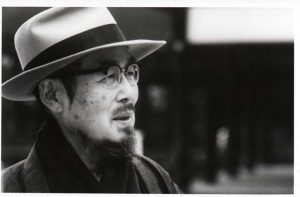
Professor Yukawa was awarded Nobel prize in physics in 1949 as the first Japanese Nobel prize laureate. He established “Meson Theory” and great achievements on the development of nuclear and elementary particle physics. As Meson theory shows, his way of thinking has uniqueness, originality, and creativity different from other scientists. What is the source of his creativity? What environment contributes it? Here you can appreciate the source of his creativity from his background; his friendship with other Nobel prize laureates in the world, his family, the influence of oriental thoughts, etc.
- Guest supervisors
Matsuoka Seigo (Director of editing engineering laboratory)
- Direction
Tosa Naoko (Academic Center for Computing and Media Studies, Kyoto University)
- Planning
Minoh Michihiko (Academic Center for Computing and Media Studies, Kyoto University)
- Music
Kondo Toshinori
- Camera
Fujioka Kazuya (Academic Center for Computing and Media Studies, Kyoto University), Ono Kunihisa (Graduate School of Management, Kyoto University)
- Technology
Wu Xiaofeng (Academic Center for Computing and Media Studies, Kyoto University)
- English translation
Furusaka Kaoru (Graduate School of Human and Environmental Studies, Kyoto University)
- Narration
Gary Jay Coffman (Graduate School of Informatics, Kyoto University)
- Illustration
Murada Masatoshi (Illustrator)
- Cooperation
The bereaved of Kaizuka Shigeki, Manabe Shunsho (Mandara), Iwanami Shoten Publishers, Oka Kiyoshi Bunko, Nara Women’s University Library, Zenrin Temple, Kojimadera, Institute for Research in Humanities, Kyoto University, Chuokoron-shinsha, Inc.
- Offer bureau
Kyoto University OpenCourseWare
- Year
2008
- Duration
12min 27sec
- Language
Japanese and English
Philosopher of Nothingness, a founder of a Japanese philosophy from ZEN Buddhism: NISHIDA KITARO
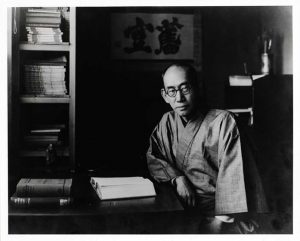
Nishida laid the foundation of a Japanese philosophy through profound understanding Buddhism, especially Zen with his positive reception and appreciation of Western philosophy. He criticized its structure grounded on “subjectivity to objectivity” concept, from his theory on “pure experience” and his idea on “place.” At the present day when the modern science-technology civilization upon the structure of Western philosophy is facing various problems, Nishida Philosophy is attracting more interest in even Europe and America.
- Guest supervisors
Matsuoka Seigo (Director of editing engineering laboratory), Fujita Masakatsu (Japan philosophy specialty in Faculty of Letters, Kyoto University)
- Direction
Tosa Naoko (Academic Center for Computing and Media Studies, Kyoto University)
- Plan
Minoh Michihiko (Academic Center for Computing and Media Studies, Kyoto University)
- Music
Kondo Toshinori
- Camera
Fujioka Kazuya (Academic Center for Computing and Media Studies, Kyoto University), Ono Kunihisa (Graduate School of Management, Kyoto University), Kitano Takaaki (Faculty of Economics, Kyoto University)
- Technology
Wu Xiaofeng (Academic Center for Computing and Media Studies, Kyoto University)
- English translation
Narration: Gary Jay Coffman (Graduate School of Informatics, Kyoto University)
- Illustration
Murada Masatoshi (Illustrator)
- Cooperation
Ittoen, Toeisya Ltd., Kokutaiji ZEN temple
- Information provider
Ishikawa NISHIDA, KITARO Museum of Philosophy, Kyoto University OpenCourseWare
- Year
2008
- Duration
11min 13sec
- Language
Japanese and English
The Tomb of Sei’i Tai’shogun, SAKANOUENO TAMURAMARO
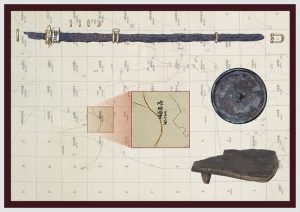
An owner of Nishinoyama tomb, which was found in 1919, had been unknown for a long time in spite of its splendid burial accessories, including a national treasure. In 2007, based on results of overall investigation of old maps, old documents, and current topography, it was published and attracted interest that there is strong likelihood that the tomb owner was Sei’i Tai’shogun, Sakanoue no Tamuramaro. This video shows the study to identify him as the owner by researchers at Kyoto University.
- Planning
Ichiro Yamanaka (The Kyoto University Museum)
- Direction
Ichiro Yamanaka, Shunsuke Yamashita (The Kyoto University Museum)
- Editing
Kiyotaka Yoshimits
- Music
Tetsuya Okuno (T-BORN)
- Narration
Hiroyuki Arita
- Supervision
Ichiro Yamanaka
- Cooperation
Shinji Yoshikawa (Graduate School of Letters, Kyoto University)
- References
Edited by Mahito Uehara, The Empress Dowager’s Mountain Temple, Yanagihara Publishing Co., Ltd., 2007
- Information providing
The Kyoto University Museum, Historiographical Institute The University of Tokyo, Sankei Shimbun Co.,Ltd., Yasakiinari Shrine
- Year
2008
- Duration
9min 5sec
- Language
Japanese
Triangular−Rimmed Deity and Beast Mirror
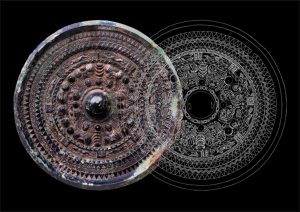
Triangular-Rimmed Deity and Beast Mirror is an important archaeological evidence for reconstruction of a historical world at the Kofun period, and have attracted attention by its artistic expression besides. Over 32 mirrors that were unearthed at Tsubai Otsuka-Yama Tumulus in 1953 are typical examples of it. In this video, various expressions and attraction of the mirror found at the tumulus, now kept in the Kyoto University Museum, is presented with their trace images.
- Planning
Ichiro Yamanaka (The Kyoto University Museum)
- Direction
Masaji Iwakura, Mikiko Takahashi, Tamaki Motoki (Academic Center for Computing and Media Studies, Kyoto University), Shunsuke Yamashita (The Kyoto University Museum)
- Sound
Kentaro Imanishi
- Cooperation
Hideki Sakaguchi (Graduate School of Letters, Kyoto University)
- References
Edited by Department of Archaeology, Graduate School of Letters, Kyoto University, Tsubai Otsuka-Yama Tumulus and Triangular-Rimmed Deity and Beast Mirror, Graduate School of Letters, Kyoto University, 1989; Edited by The Museum, Archaeological Institute of Kashihara, Nara Prefecture, Kyoto University, and Tokyo Shimbun, Grand Tumuli Exhibition, Tokyo Shimbun, 2000
- Information providing
The Kyoto University Museum
- Coproduction
Contents Production Team, Academic Center for Computing and Media Studies, Kyoto University
- Year
2008
- Duration
11min 6sec
- Language
Japanese
Breakthrough: Yoneo Ishii and the Study of Southeast Asia
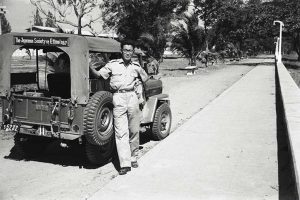
Yoneo Ishii, who devoted his life to research of Southeast Asia, especially Thailand, developed Center for Southeast Asian Studies, Kyoto University, born in 1963, to a unique organization of area studies. In a half century from Southeast Asian studies started at Kyoto, a lot of theories and hypotheses were proposed. Yoneo Ishii has his base of activity in the area, learned the local language, and advocated great importance of collaboration between researchers in different fields for area studies. In this video, he spoke enthusiastically the past and today of Southeast Asia studies.
- Planning
Mamoru Shibayama (Center for Southeast Asian Studies, Kyoto University)
- Direction
Hidetoshi Yanagihara
- Camera
Kasai Tomonobu (Kokihifumi Inc.)
- Sound
Hitoshi Watanabe (Kokihifumi Inc.)
- Music
Hidetoshi Yanagihara
- Sound editing
Shoichiro Terasaka
- Editing
Zouichi Ohme (k.k.moi)
- Narration
Makoto Ataka
- Management
Shinji Otake (k.k.moi)
- Supervision
Noboru Ishikawa, Mariko Yonezawa, Yuko Kawai (Center for Southeast Asian Studies, Kyoto University)
- Cooperation
Yukio Hayashi (Center for Integrated Area Studies, Kyoto University)
- References
Yoneo Ishii, Breakthrough, Mekong Publishing co. Ltd., 2003; History of Area Studies, Center for Southeast Asian Studies, Kyoto University, 2002
- Information providing
Yoneo Ishii; Noboru Ishikawa; Mamoru Shibayama; Center for Southeast Asian Studies, Kyoto University; Center for Integrated Area Studies, Kyoto University; Kyoto University Archives
- Coproduction
k.k.moi
- Year
2008
- Duration
13min 16sec
- Language
Japanese
Moving Continent
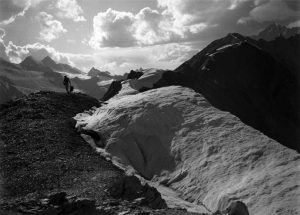
Kazuo Huzita, a geologist who participated in a Kyoto University Science Expedition at Karakoram and Hindukush in 1955, explored from a burning canyon to a huge glacier and created a map that recorded geological data. Huzita participated also in a science expedition of next year, and looked for the border between Karakoram and Hindukush area, but …
In this video, you can follow exploration spirit and a way of thinking of a field worker through a first-person narrative.
- Planning
Naoto Ishikawa (Graduate School of Human and Environmental Studies, Kyoto University), Shunsuke Yamashita (The Kyoto University Museum)
- Direction
Shunsuke Yamashita
- Camera
Takao Minami
- Sound
Tomoko Ueyama
- Narration
Akihisa Yamazaki
- Supervision
Kazuo Huzita (Professor Emeritus at Osaka City University, Fault Research Data Center)
- Cooperation
Taeko Inada (Fault Research Data Center), Fault Research Data Center
- References
Kazuo Huzita, Ideas from the Alps and the Himalayas, the Asahi Shimbun Company, 1992; Moving Continent - Kazuo Huzita’s Visual Archives of the Science Expedition to the Karakoram and Hindukush -, under the supervision of Kazuo Huzita, Preparatory committee for establishing Field Visual Archive Center, Kyoto University, 2007
- Information providing
Kazuo Huzita
- Year
2008
- Duration
13min 9sec
- Language
Japanese
Evolving Study of African Cities
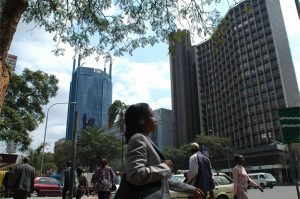
To understand dynamics of human life in perstective of human history, we need to focus on activities in urban world, not only primary industury such as hunting-gathering, agriculture, and stock-farming. Since 1960s, Kyoto University have led African studies in Japan by an original point of view and methodology, and the results have been appreciated in the world.
- Planning
Motoji Matsuda (Graduate School of Letters, Kyoto University), Itsushi Kawase (Graduate School of Asian and African Area Studies, Kyoto University)
- Direction
Motoji Matsuda, Itsushi Kawase
- Drawing
Noriko Narisawa (Graduate School of Asian and African Area Studies, Kyoto University)
- Music selection
Itsushi Kawase
- Narration
Moriyuki Hishida
- Supervision
Juichi Itani
- Cooperation
National Museum of Ethnology; the Center for African Area Studies, Kyoto University
- Information providing
Itsushi Kawase, Tatsuro Suehara, Masashi Suda, Xiaogang Sun, Tadasu Tsuruta, Shunya Hino, Motoji Matsuda, National Museum of Ethnology
- Year
2008
- Duration
7min 34sec
- Language
Japanese
African Farming Societies: Agriculture in Miombos
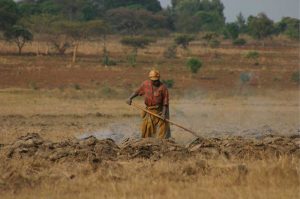
Study of African farming societies, started at the 1960s, have been approaching to the heart of traditional farming societies by investigating relationship, mediated by farming, between a natural environment, economy, and a society. The results and experience are inherited to practical studies seeking the way to developing modern Africa. In this video, a history of the study of farming societies is shown, focusing on savanna woodlands (Miombo).
- Planning
Juichi Itani (Graduate School of Asian and African Area Studies, Kyoto University)
- Direction
Kiyotaka Yoshimitsu
- Drawing
Noriko Narisawa, Fumi Kondo (Graduate School of Asian and African Area Studies, Kyoto University)
- Music
Tetsuya Okuno (T-BORN)
- Narration
Eiji Tsuda
- Supervision
Juichi Itani
- Cooperation
National Museum of Ethnology; the Center for African Area Studies, Kyoto University
- Information providing
Juichi Itani, Jun’ichiro Itani, Keisuke Oka, Makoto Kakeya, Morie Kaneko, Fumi Kondo, Kagari Shikata, Tatsuro Suehara, Yuko Sugiyama, Nobuyuki Hata, Masaaki Hirai
- Year
2008
- Duration
13min 44sec
- Language
Japanese
Pastoral Societies in the Drylands of East Africa
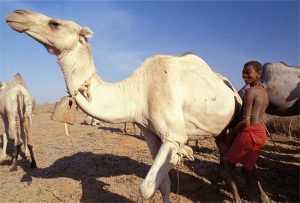
At the drylands of East Africa, there are societies of pastoral people who depend on livestock. From 1961, Kyoto University have carried out long fieldworks in pastoral societies at Tanzania, Kenya, Ethiopia, Sudan and published results to the world. In this video, you can look back on a history of the fieldworks, taking life of Rendille pastoralists of Kenya as an example.
- Planning
Itaru Ohta (Graduate School of Asian and African Area Studies, Kyoto University)
- Direction
Xiaogang Sun (Graduate School of Asian and African Area Studies, Kyoto University)
- Editing
Daisuke Bundou (Graduate School of Asian and African Area Studies, Kyoto University)
- Drawing
Fumi Kondo, Noriko Narisawa (Graduate School of Asian and African Area Studies, Kyoto University)
- Narration
Moriyuki Hishida
- Supervision
Itaru Ohta
- Cooperation
National Museum of Ethnology; the Center for African Area Studies, Kyoto University
- Information providing
Xiaogang Sun, Kyoko Nakamura, Katsuyoshi Fukui, National Museum of Ethnology
- Year
2008
- Duration
7min 54sec
- Language
Japanese
Paleoanthropology in Africa
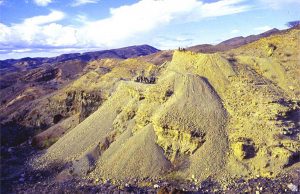
Only less than a few percent of fossil anthropoids, which have a history of over twenty million years, have been found so far. To reveal how anthropoids evolved and brought human, chimpanzees, and gorillas into exist is a work just like connecting points with lines. At a burning land of Kenya, paleoanthropologists continue excavating to find clearer evidences.
- Planning
Masato Nakatsukasa (Graduate School of Science, Kyoto University)
- Direction
Daisuke Bundou (Graduate School of Asian and African Area Studies, Kyoto University)
- Drawing
Noriko Narisawa (Graduate School of Asian and African Area Studies, Kyoto University)
- Narration
Moriyuki Hishida
- Supervision
Masato Nakatsukasa
- Cooperation
the Center for African Area Studies, Kyoto University
- Information providing
Hidemi Ishida, Jun’ichiro Itani, Yutaka Kunimatsu, Masato Nakatsukasa, Yoshihiko Nakano, Ayumi Yamamoto
- Year
2008
- Duration
7min 15sec
- Language
Japanese
The Forest People of Central Africa
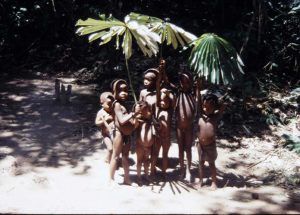
At Congo Basin, which is located at the center of African tropical rainforest, is home to hunting-gathering people called the Pygmies. Their distinctive culture that depends various blessings of the forest, and excellent dance that have been known as “Dancers of the God” from the time of the Old Kingdom of Egypt attracted researchers. This video follows the researchers’ footprints.
- Planning
Mitsuo Ichikawa (Graduate School of Asian and African Area Studies, Kyoto University)
- Direction
Mitsuo Ichikawa, Daisuke Bundou (Graduate School of Asian and African Area Studies, Kyoto University)
- Drawing
Fumi Kondo (Graduate School of Asian and African Area Studies, Kyoto University)
- Narration
Moriyuki Hishida
- Supervision
Mitsuo Ichikawa
- Cooperation
Primate Research Institute Kyoto University; the Center for African Area Studies, Kyoto University
- Information providing
Mitsuo Ichikawa, Kaori Komatsu, Shiho Hattori, Daisuke Bundou, Primate Research Institute Kyoto University
- Year
2008
- Duration
9min 38sec
- Language
Japanese
History of Primatology in Africa
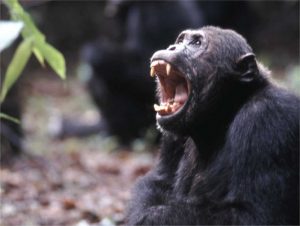
Studies of Primatology in Africa by Kyoto University have left considerable results, such as observation of chimpanzees by Lake Tanganyika, ecology and social structures of great apes that had not been known so far. In this video, you can take a view of the development of primatology, watching cultures of chimpanzees, which vary from area to area.
- Planning
Toshisada Nishida (Professor Emeritus at Kyoto University)
- Direction
oshisada Nishida, Kouichiro Zamma (Great Ape Research Institute of Hayashibara Biomedical Laboratories, Inc.)
- Music
Sitwa Juma Hassani
- Narration
Moriyuki Hishida
- Supervision
Nishida Toshisada
- Cooperation
Takeshi Furuichi (Primate Research Institute Kyoto University); Primate Research Institute Kyoto University; the Center for African Area Studies, Kyoto University; Japan Monkey Centre
- Information providing
Jun’ichiro Itani, Shigeo Uehara, Takayoshi Kano, Kouichiro Zamma, Yukimaru Sugiyama, Toshisada Nishida, Kazuhiko Hosaka
- Year
2008
- Duration
9min 50sec
- Language
Japanese
Road to Africa
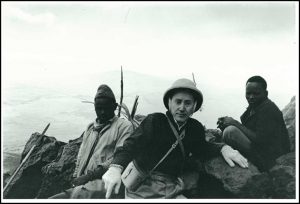
In 1958, Kinji Imanishi and Jun’ichiro Itani, Kyoto University, visited Africa for the first time to investigate gorillas and chimpanzees that hold the key to the mystery of the evolution of human. In this video, you can look back on a half century long history of African studies, and follow the development of primatology, ecological anthropology, cultural anthropology, paleoanthropology, and African Area Studies in Japan.
- Planning
Mitsuo Ichikawa (Graduate School of Asian and African Area Studies, Kyoto University)
- Direction
Mitsuo Ichikawa, Daisuke Bundou (Graduate School of Asian and African Area Studies, Kyoto University)
- Drawing
Noriko Narisawa (Graduate School of Asian and African Area Studies, Kyoto University)
- Narration
Moriyuki Hishida
- Supervision
Mitsuo Ichikawa, Juichi Itani (Graduate School of Asian and African Area Studies, Kyoto University)
- Cooperation
National Museum of Ethnology; the Center for African Area Studies, Kyoto University
- Information providing
Jun’ichiro Itani, Mitsuo Ichikawa, Masao Kawai, Itsushi Kawase, Tatsuo Kira, Masayoshi Shigeta, Xiaogang Sun, Masato Nakatsukasa, Toshisada Nishida, Motoji Matsuda, Juichi Yamagiwa, Nobuyuki Hata, National Museum of Ethnology, Primate Research Institute Kyoto University, The Kyoto University Museum, Academic Alpine Club of Kyoto
- Year
2008
- Duration
9min 31sec
- Language
Japanese
